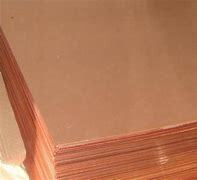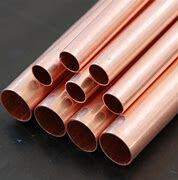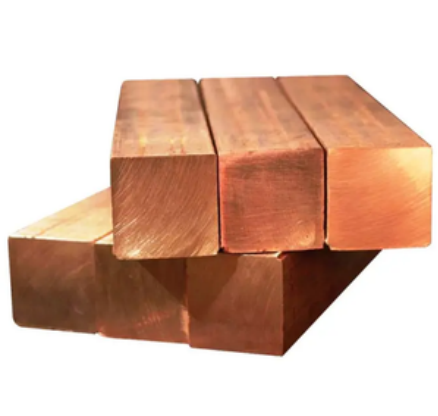1. Introduction
In the past 48 hours, global copper prices have spiked over 3% due to supply chain disruptions in Chile and rising demand from renewable energy and EV sectors (source: Bloomberg, May 22, 2024). This surge directly impacts everything from copper rod price to copper strip price and even ac copper pipe price—making it more crucial than ever to understand the nuances of copper products.

Whether you’re an electrician installing an earthing system, a welder joining copper components, or a recycler stripping copper wire for scrap, knowing the right type of copper material can save time, money, and performance headaches. This guide breaks down the key categories of copper rods and strips, compares their properties, and clarifies where each excels.
2. Copper Rods: Types and Applications
Not all copper rods are created equal. The term ‘copper rod’ broadly covers several specialized forms, each engineered for distinct purposes.
- Copper earth rod and earthing rod copper are used in grounding systems to safely channel electrical faults into the earth. Pure copper versions offer excellent conductivity but are expensive. Alternatives like copper bonded earthing rod or copper clad steel earth rod combine a steel core for strength with a copper layer for conductivity—offering a cost-effective middle ground.
- For joining metals, copper brazing rod and copper to copper brazing rods are essential. These filler materials melt at lower temperatures than base metals, creating strong, leak-proof joints—ideal for HVAC or plumbing. Similarly, copper welding rod and copper rod for welding serve in specialized fusion processes, though true copper to copper welding rod is rare due to copper’s high thermal conductivity.
- Structural and conductive uses often rely on copper round bar or round bar copper, commonly found in busbars, machinery parts, or as raw stock. Flexible copper bar and copper bus bar variants are critical in power distribution systems.
3. Copper Strips: From Earthing to Recycling

Flat and versatile, copper strip (also called copperstrip or copper metal strips) comes in many forms. Thin copper strips like 1mm copper strip are used in electronics, while thicker variants such as copper earth strip 25x3mm serve in grounding grids.
Specialized alloys expand functionality: beryllium copper strip and copper beryllium strip offer high strength and fatigue resistance for springs and connectors. Nickel plated copper strip enhances corrosion resistance in harsh environments.
For recyclers, questions like ‘best way to strip copper wire’ or ‘fast way to strip copper wire’ are common. Mechanical strippers are preferred over burning copper wire for scrap, which releases toxic fumes and degrades copper quality. Stripping wire for recycling properly preserves value—especially for copper strip wire or stripping cable for copper recovery.
4. Copper Pipes and Tubing: Sizing, Soldering, and Pricing
While not rods, copper pipes are closely related in material and application. Air conditioning copper pipe (or aircon copper tube) is vital in HVAC systems, with common sizes like 15mm copper pipe and 22mm copper tube. Correct copper pipe sizing ensures system efficiency.

Joining methods matter: copper pipe soldering requires clean surfaces and proper flux. Resoldering copper pipe joints without removal is possible with careful heat control. Fittings like copper pipe connectors and copper tubing fittings must match pipe type—L, M, or K—based on wall thickness.
Pricing fluctuates with markets: ac copper pipe price and copper tube price often track the 1oz copper price. Alternatives like pex plumbing pipes are gaining ground in residential use, but copper remains unmatched for durability in high-pressure or high-temperature applications.
5. Market Considerations and Sourcing Tips
With copper rod price and copper ingot price rising, buyers are weighing options. Copper bonded steel and copper clad ground rod offer savings over solid copper while maintaining performance in many earthing applications. Always verify conductivity specs—copper clad steel ground rod must meet IEEE or IEC standards.
For DIYers or small businesses, searching ‘copper strip near me’ or ‘copper bars for sale’ can yield local suppliers. Roll of copper strip or copper strip roll is convenient for continuous applications like shielding or edging. Copper edging strip and copper roof strip are niche but valuable in architecture.
Avoid shortcuts like burning copper wire for scrap—it’s illegal in many areas and harms both health and resale value. Instead, invest in a quality stripper for stripping copper wire for scrap efficiently and safely.
6. Conclusion
From copper earth rod to copper brazing rod, and from flat copper strip to aircon copper pipe, copper’s versatility is unmatched. Understanding the differences between solid, bonded, and clad variants helps optimize cost and performance. As global demand pushes copper prices upward, informed choices—whether you’re grounding a substation or stripping wire for recycling—will deliver better results and long-term value.
Our Website founded on October 17, 2012, is a high-tech enterprise committed to the research and development, production, processing, sales and technical services of ceramic relative materials such as Copper. Our products includes but not limited to Boron Carbide Ceramic Products, Boron Nitride Ceramic Products, Silicon Carbide Ceramic Products, Silicon Nitride Ceramic Products, Zirconium Dioxide Ceramic Products, etc. If you are interested, please feel free to contact us.

